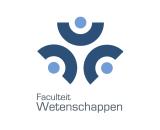Research areas
Generalized polygons and near polygons
Generalized polygons were introduced by J. Tits and form a natural generalisation of the projective planes. Applications of generalized polygons can be found in many other areas within incidence geometry, such as design theory, but also in information technology (especially coding theory and cryptology). J. A. Thas is co-author, together with S.E. Payne (Denver), of the book Finite Generalized Quadrangles which is the standard reference in the field. Similarly the book Generalized Polygons by H. Van Maldeghem is the essential reference for those researchers in generalized polygons. Several important results on generalized polygons have been published by
Partial and semipartial geometries
A (semi)partial geometry is itself a generalisation of the concept of a generalized quadrangle. F. De Clerck, J. A. Thas and collaborators have published several important results on new constructions and characterisations of these geometries. The links with the theory of strongly regular graphs and design theory are very interesting.
Flocks, m-systems, arcs, caps, blocking sets and partial s-spreads in finite projective spaces
The study of arcs and caps can be regarded as a link between the so-called abstract Galois geometry and applied combinatorics, such as coding theory (especially the theory of M.D.S. codes). L. Storme and J.A. Thas have obtained important results, especially on upper bounds on the number of points that such sets can have. A partition of points of a quadratic cone (minus its vertex) into disjoint conics is called a 'flock' of the cone. After it was proved by
F. De Clerck, J.A. Thas and H. Van Maldeghem have contributed to the Handbook of Incidence Geometry, which is regarded as the fundamental reference in the field.
Perspectives
Recent research results on the characterisation of generalized hexagons and octagons will be compared with known characterisations of generalized quadrangles, which will yield common characterisations of generalized polygons. These new results can give a geometric proof of important conjectures in the field of generalized polygons. We shall also study characterisations of generalized polygons (especially quadrangles) using the automorphism groups. Moreover a deep (geometric and algebraic) study of Moufang polygons will continue. Now and in future years, we shall work on a major project regarding embeddings in projective spaces of generalized polygons and polar spaces.
The embeddings of near polygons in projective and affine spaces will be investigated in more detail. Moreover, as the classification of the near polygons with small parameters seems to be possible we will certainly include it in our future perspectives.
Regular generalized quadrangles are very well understood. In some respects one can also introduce regular (semi)partial geometries, known models of which seem to be strictly related to polar spaces. This relation will be investigated.
Using special techniques from algebraic geometry, we will try to find better bounds on arcs and caps.
The research domain will also be expanded into the direction of coding theory, with particular emphasis on the improvements of bounds on codes and on finding new constructions.
The study of m-systems wil continue, especially we will look for new characterisations as well as for new applications.
Computer algebra will also receive particular attention. New flocks with small parameters have been found by computer. Group theoretic computer packages such as GAP and MAGMA can be used to find the automorphism group of the flocks. This way, one can find combinatorial properties that can yield computer-free constructions of infinite classes of flocks and characterisations in geometric terms.
Furthermore, a GAP package for projective geometries is being developed. Using this package, researchers can do certain computations involving geometric objects or they can check particular properties of those objects.
Together with the development of this software, research results using the software were obtained in a lot of different topics such as coding theory, objects in projective spaces and polar spaces and objects in certain models of generalized polygons. We also explore the possibilities to do huge computersearches for objects like blocking sets or spreads in projective spaces and polar spaces, using our software on a cluster of computers. Also here we obtained research results.
Discrete mathematical problems arising from cryptography
Leo Storme, together with Yves Edel, studies substructures in finite projective spaces and other incidence structures and their links to other research areas, such as cryptography and coding theory. Concrete contributions include the constructions of new APN functions, analogies of cryptographically relevant functions, such as APN functions, to structures like projective planes, dual hyperovals, spreads, error correcting codes and bilinear forms, the study of linear codes meeting the Griesmer bound and minihypers in finite projective spaces, small weight codewords in linear codes, and the study of minimal codewords in linear codes, related to cryptography. L.Storme leads the workpackage WP1, discrete mathematics, within the IUAP project P6/26-BCRYPT, dealing with these problems.Selected publications
- J.W.P. Hirschfeld, J.A. Thas; General Galois Geometries, Oxford University Press, Oxford 1991, 424 pp. (ISBN 0-19-853537-6).
- S.E. Payne, J.A. Thas; Finite Generalized Quadrangles, Pitman, London 1984, 312 pp. (ISBN 0-273-08655-3).
- F. Buekenhout (editor), Handbook of Incidence Geometry, North Holland, Amsterdam 1995, (ISBN 0-444-88355-X).
- Chapter 7, Projective Geometry over Finite Fields, J.A. Thas
- Chapter 9, Generalized Polygons, J.A. Thas
- Chapter 10, On Some Rank 2 Geometries, F. De Clerck, H. Van Maldeghem.
- J. W. P. Hirschfeld, L. Storme; The packing problem in statistics, coding theory and finite projective spaces. Journal of Statistical Planning and Inference 72 (1998), 355-380.
- H. Van Maldeghem; Generalized Polygons, Birkhaüser Verlag, Berlin 1998. (ISBN 3-7643-5864-5).
- K. Thas; Symmetry in finite generalized quadrangles, Frontiers in Mathematics. Birkhaüser Verlag, Basel, 2004. (ISBN: 3-7643-6158-1).
- B. De Bruyn; Near polygons. Frontiers in Mathematics. Birkhaüser Verlag, Basel, 2006. (ISBN: 978-3-7643-7552-2; 3-7643-7552-3).
- J.A. Thas, K. Thas, H. Van Maldeghem; Translation Generalized Quadrangles, Series in Pure Mathematics 26, World Scientific, 2006. (ISBN 981-256-951-0).


